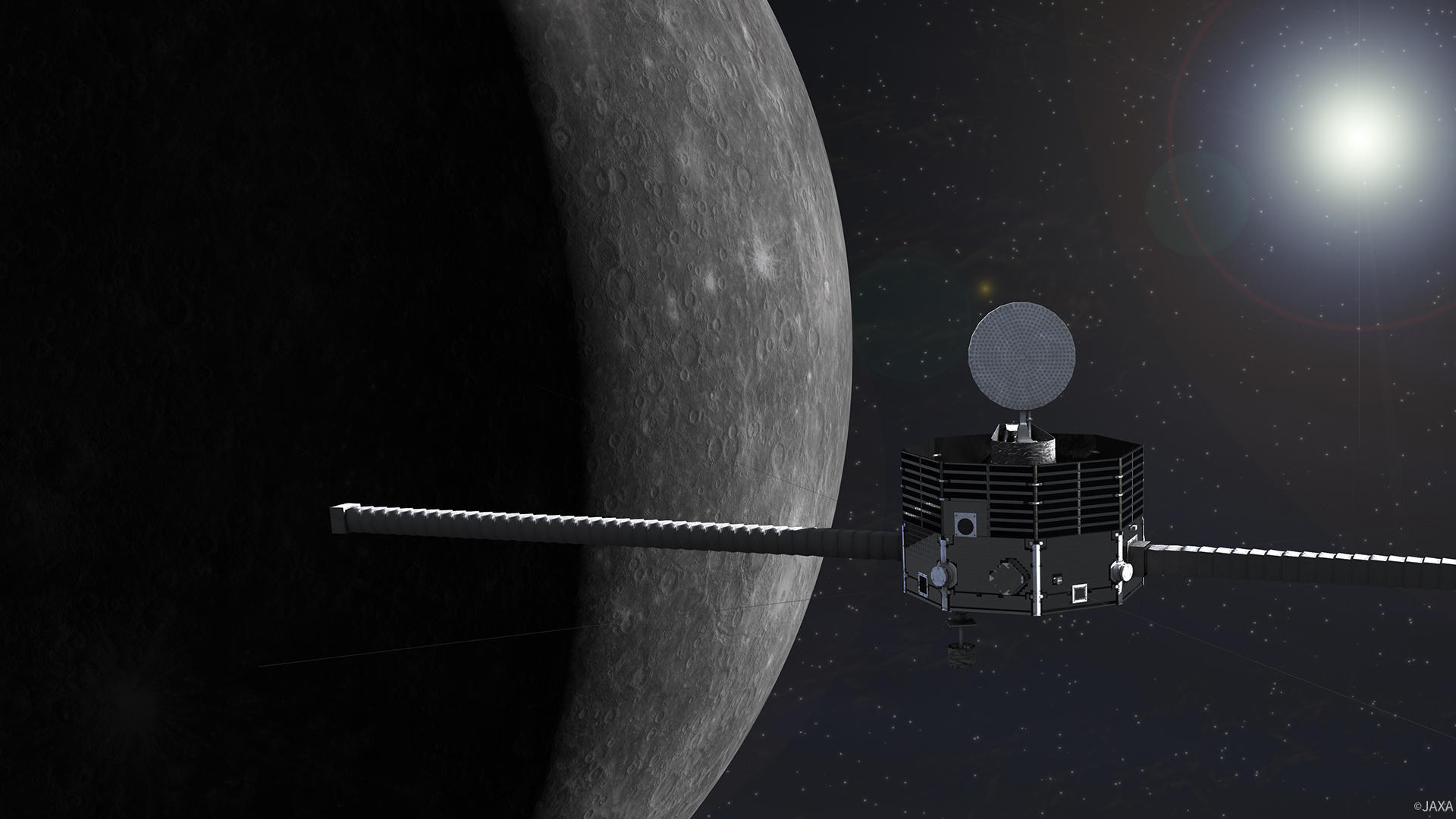
Mercury

Mercury
Mercury Magnetospheric Orbiter "MIO"
A voyage of a total distance of 9 billion kilometers: Two probes search for the true face of Mercury
Mercury is the smallest planet in our solar system and also the closest one to the sun. It is only about two-fifth of the size of the Earth, with a mass that is less than one-tenth of that of Earth. But it is a planet with extreme temperatures, reaching to a maximum of about 430 degrees Celsius during the daytime and plunging to minus 170 degrees Celsius in the nighttime, so that there is an astounding difference of about 600 degrees between its day and night temperatures.
Until now, only two probes from NASA have gone to Mercury--the Mariner 10 launched in the 1970s, and the Messenger that made astounding discoveries and was also the only one to have orbited the planet between 2011 and 2015. In this situation, after 21 years of conceptualization (in Japan), the Mercury Magnetospheric Orbiter "MIO" (JAXA) and the Mercury Planetary Orbiter "MPO" (ESA) was launched in October 2018 from the Guiana Space Center in South America aboard the Ariane 5 rocket. The probes were launched as part of the international Mercury exploration project called BepiColombo, a joint mission conducted by JAXA and the European Space Agency (ESA).
MIO will explore the magnetic field, magnetosphere, interaction with the solar wind, and atmosphere on Mercury. Meanwhile, MPO will explore the terrain on the surface of Mercury and its chemical components, and will also look into the inner structure of the planet and the ice in its polar region. These two probes will be utilized to discover what Mercury is truly like.
Since Mercury is located deep in the gravity well of the sun, both MIO and MPO require large amounts of energy to change their trajectory in order to reach Mercury. Thus, the two probes will orbit the sun many times over a period of about seven years, adding electric propulsion and swinging by Earth, Venus, and Mercury a total of nine times before finally making it into orbit around Mercury in December 2025. After that, the probes are scheduled to observe the planet for about a period of one year. This voyage of a total distance of 9 billion kilometers still continues.
- Home>
- Global Activity>
- Public Relations>
- JAXA’s>
- JAXA's No.77>
- Mercury